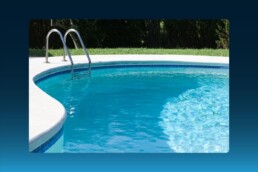Owning a swimming pool can transform your home into a private oasis, offering a place to relax, exercise, and entertain. However, with this luxury comes significant responsibility. Swimming pools pose various safety hazards that homeowners must address to ensure the well-being of family members, friends, and guests.
This article explores the most common swimming pool safety hazards and provides practical tips to help you protect your loved ones and maximize the benefits of your pool.
Common Swimming Pool Safety Hazards
While swimming pools provide endless enjoyment, they also have various safety hazards that can turn a fun day into a dangerous situation. Understanding these hazards is the first step in preventing accidents and ensuring a safe swimming environment.
Drowning Risks
Drowning is the most serious hazard associated with swimming pools. It can occur quickly and silently, making constant supervision essential. Children are particularly vulnerable, and even those who know how to swim are not immune to the dangers.
Drowning can happen in seconds, often without any noticeable signs of struggle. This silent and swift nature of drowning underscores the critical need for vigilant supervision whenever the pool is in use. Additionally, adults and older children should be aware of basic water safety principles to minimize risks further.
Slippery Surfaces
When wet, the area around the pool, including the pool deck, can become extremely slippery, leading to falls and serious injuries. Running or engaging in rough play on these wet surfaces significantly increases the risk of accidents.
To mitigate this hazard, it is important to choose slip-resistant materials for pool decking and maintain these surfaces regularly. It is also crucial to promptly address algae and mold growth, which can make surfaces even more slippery. Implementing strict rules about no running or roughhousing near the pool can help prevent accidents.
Electrical Hazards
Electrical equipment, such as pool lights, pumps, and heaters, is essential for maintaining a pool but poses a severe risk if not properly installed and maintained. Faulty wiring, broken equipment, or improper grounding can lead to electrocution, which can be fatal.
To prevent electrical hazards, qualified electricians should install and inspect all pool electrical systems. Regular maintenance and inspections ensure everything is in good working order. Using Ground Fault Circuit Interrupters (GFCIs) can also provide additional protection against electrical shock.
Chemical Exposure
Swimming pools require chemicals like chlorine to keep the water clean and safe for swimming. However, improper handling and storage of these chemicals can pose serious health risks. Direct contact with pool chemicals can cause skin irritation, respiratory issues, and even poisoning. Storing pool chemicals in a cool, dry place that is out of reach of children and pets is crucial.
Always follow the manufacturer’s instructions for handling and mixing chemicals. When adding chemicals to the pool, always add the chemical to water, not water to the chemical, to avoid dangerous reactions. Personal protective equipment, such as gloves and goggles, can also help reduce the risk of exposure.
Lack of Barriers
Pools without adequate barriers are a major safety concern, as they are more accessible to children and pets, increasing the risk of accidental drownings. Installing a sturdy fence around the pool is one of the most effective measures to prevent unauthorized access. The fence should be four feet high and equipped with a self-latching gate that opens outward.
Pool covers, in addition to fences, provide extra protection when the pool is not in use. They should be strong enough to support a child’s weight and securely fastened to prevent accidental entry. Regularly inspect these barriers to ensure they remain effective and intact.
Best Practices for Swimming Pool Safety
Creating a safe swimming environment requires more than just recognizing potential hazards; it involves implementing adequate safety measures to mitigate those risks. Adopting best practices for swimming pool safety can significantly reduce the likelihood of accidents and injuries.
Supervise Constantly
Never leave children unattended near the pool. Assign a designated adult to watch over swimmers, especially during gatherings or parties. This person should avoid distractions like phones or books. Additionally, consider setting up a rotation schedule for supervision during longer events.
Implement Safety Alarms
Install pool alarms that alert you if someone enters the pool area. Door alarms can also be installed on doors leading to the pool, providing extra security. Regularly test these alarms to ensure they are functioning properly and replace batteries as needed.
Provide Swimming Lessons
Enroll children and non-swimming adults in swimming lessons. Knowing how to swim can significantly reduce the risk of drowning. However, remember that swimming lessons do not replace the need for supervision. Encourage continuous practice to maintain and improve swimming skills.
Learn CPR
Knowing CPR can save a life in an emergency. Ensure that you and other pool users are trained in CPR and keep a phone nearby to call for help if needed. Refresh your CPR training regularly to stay updated on the latest techniques and guidelines.
Keep Safety Equipment Accessible
Ensure that safety equipment such as life rings, reaching poles, and first aid kits are readily available near the pool. Familiarize everyone in your household with the location and proper use of this equipment.
Key Takeaways
Swimming pools offer a wonderful way to enjoy the outdoors and stay active. However, safety must always be a top priority. Homeowners can create a safe and enjoyable environment for everyone by understanding common hazards and implementing best practices.
Taking these precautions protects your loved ones and provides peace of mind, allowing you to enjoy your pool fully.

